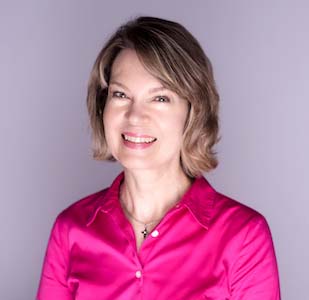“Call 911! Call 911! Daddy has collapsed in the front yard!” These were the frantic cries that jolted me awake early one balmy December morning in our Texas hill country home. Clad only in my nightgown, I flew down the stairs, out the door and instinctively, mechanically, began performing CPR as I had done countless times on dummies but never before on a human being. As an RN, you acquire the discipline of disengaging emotions and applying skills and knowledge to whatever crisis you find yourself in at the moment. This talent was put to good use that morning as I robotically counted my compressions, timed my breaths, checked for a pulse and waited for Star Flight to descend from the clouds; not for a moment allowing the familiarity of my “patient” to penetrate my heart.

Once the paramedics had arrived, they smoothly and professionally assumed responsibility. As I rushed back into the house to throw on some clothes and get ready to accompany my father to the hospital, scenes from his first two heart attacks began to race around my mind. I knew the routine. EMT’s arrive; they stabilize him enough to transport him to the hospital, where, after a week or so everything will be alright again. I was completely unprepared for the scene I was about to witness. As I emerged from the door, instead of loading him into the helicopter, they were slowly disconnecting the heart monitor, removing the artificial airway and putting away the intravenous medications.
I stood frozen. I wanted to scream, “What are you doing!? Don’t stop! Please, just a little bit longer and I know you can stabilize him!” I wanted to shout – but I couldn’t. I knew, painfully, that they had done everything that could have been done. There was no pulse. There had never been a pulse. I was forced to accept that my father was gone, and the dam restraining my emotions began to burst.
In the many years since that mournful morning, my curiosity about the relationship between diet and health has mushroomed into a life-changing passion. My decision to pursue an advanced degree in Nutrition was fueled not only by my personal family history but also by my first career.
Growing up in the sixties, I remember my mother attempting to follow the “Four Food Groups” idea when planning family meals. She did the best she could with the limited knowledge available. Margarine was “healthy” and Space Food Sticks were all the rage. My father, the editor of a large metropolitan newspaper, rarely deviated from his eating pattern which always began with a very early morning breakfast of coffee and cookies (the soft store-bought kind with loads of stealth, trans fat). He worked long hours at a stress-filled, time-pressured job, drinking coffee but never eating more than a few crackers or such until coming home for a hefty dinner. After supper, and up until a late bedtime, he could invariably be found in his favorite chair (Archie Bunker style) planted in front of the TV, snacking. He had converted the linen closet into his very own junk food pantry. He would consume whole packages of doughnuts, candy, chips, etc., and soft drinks by the liter. There is not a shred of doubt in my mind as to the correlation between his eating habits and his early death from heart disease.
Columbus, Ohio, my hometown, was a test-city for new fast food chains.

The idea was, that if a new restaurant could make it there, it could make it anywhere. In elementary school, the highlight of my day was a lunch date with Daddy. We prided ourselves on being fast food aficionados and by the time I was a teen, I shared many of my father’s dietary habits. The resulting inevitable weight gain instigated a struggle with bulimia lasting until my college years. I thank God for my first Nutrition class in the Nursing School at Ohio State University. Since that time, reading and applying sound nutritional advice has been a hobby, from which my second vocation has emerged.
My first vocation, taking care of hospital patients as a medical/surgical nurse (interspersed with raising five children) over the last thirty years revealed two simple conclusions:
Comparing the typical patient population from the early 1980’s to what we’re seeing now, discloses some frightening trends. Essentially, we have seen a massive increase in the amount of preventable diseases that we are treating. Lifestyle-related conditions such as heart disease, diabetes, obesity, inflammatory disorders and some types of cancers are not only afflicting more people but younger people as well. Children are now presenting with the types of diseases that have been traditionally associated only with adults, especially the elderly. Personally, it is shocking and distressing to watch the health of our nation’s children being swept away in the flood of fast-food feasting.
As a nurse, I know how to take care of patients who are suffering with these awful, chronic and debilitating diseases. But, I have a greater desire to assist people in learning how to take care of themselves; how to have healthy lifestyles and eating patterns in order to escape the onset of these diseases in the first place.
Peace of Health exists to inspire and motivate us to take charge of our own health and increase our enjoyment and appreciation of the abundant variety of delicious and healthy food choices available to us in this country.

© All Rights Reserved 2023 | Web Design & Development by WebTree LLC